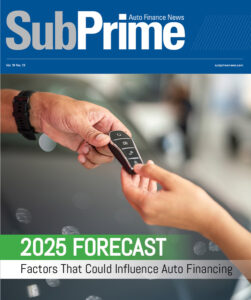Unemployment rate now seen above 15%

The likelihood some contract holders currently in your auto-finance portfolio will seek some kind of payment modification grew again with the latest initial claims for unemployment benefits reported by federal officials on Thursday morning.
For the second week in a row, those initial claims surpassed 6.6 million as the Department of Labor reported that for the week ending Saturday, the advance figure for seasonally adjusted initial claims was 6,606,000, a decrease of 261,000 from the previous week’s revised level. The previous week's level was revised up by 219,000 from 6,648,000 to 6,867,000.
Curt Long, chief economist and vice president of research at the National Association of Federally-Insured Credit Unions (NAFCU), shared his estimate at where the claims figure now leaves the overall employment rate.
“The first week of April saw 6.6 million more initial unemployment insurance claims to bring the 3-week total to nearly 17 million. That figure represents over 10% of the labor force and probably does not capture the true total of unemployed workers,” Long said in a statement on Thursday morning.
“With some states still struggling to process the flood of claims, the unemployment rate now likely exceeds 15%,” he added.
Earlier this week, six federal financial institution regulatory agencies, in consultation with state financial regulators, issued a revised interagency statement encouraging financial institutions to work constructively with borrowers affected by COVID-19 and providing additional information regarding loan modifications.
Officials said their revised statement also provides the agencies’ views on consumer protection considerations.
The agencies explained this revised statement clarifies the interaction between the interagency statement issued on March 22 and the temporary relief provided by Section 4013 of the Coronavirus Aid, Relief, and Economic Security Act, which was signed into law on March 27. Section 4013 allows financial institutions to suspend the requirements to classify certain loan modifications as troubled debt restructurings (TDRs).
Officials went on to note the revised statement also provides supervisory interpretations on past due and nonaccrual regulatory reporting of loan modification programs and regulatory capital. The agencies making these moves via this revised policy include:
—The Federal Reserve System
—Consumer Financial Protection Bureau
—Federal Deposit Insurance Corp.
—National Credit Union Administration
—Office of the Comptroller of the Currency
“The policy challenges are enormous,” S&P Global Ratings chief economist Paul Gruenwald said earlier this week. “Central banks and governments have moved quickly, pulling out all of the stops to keep the financial system functioning as orderly as possible, protect the most vulnerable and highly affected groups and bridge to an eventual recovery.”
Meanwhile, lawmakers on Capitol Hill are reportedly working on additional relief stimulus as initiatives such as the Payroll Protection Program and payments directly to individuals and families continue to be implemented.
“The policy response to the coronavirus pandemic has been massive. We assume that more will follow,” Comerica Bank chief economist Robert Dye said in an analysis posted earlier this week.
Dye added that the spike in unemployment isn’t like to soften quickly even when the general economy generates more activity, noting three elements that might help with potential declines.
“We assume that unemployment benefits are extended, while job creation quickly settles following a relatively short-lived bounce back in hiring,” Dye said.
“Three factors will determine how quickly the unemployment rate falls,” he continued. “One is the rate of post-crisis job creation. The second is the duration of extended unemployment benefits. The third is the retirement patterns of older workers.”

 View The Latest Edition
View The Latest Edition

